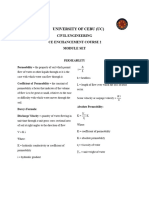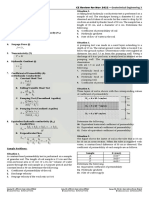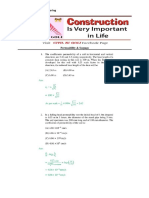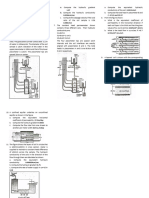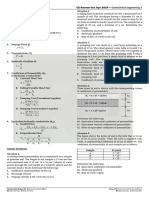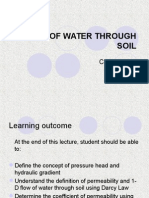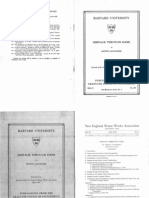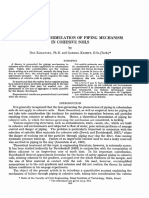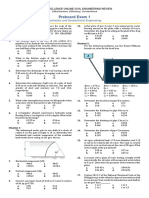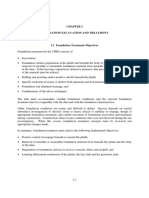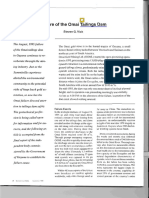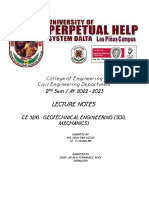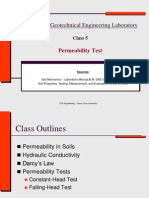0% found this document useful (0 votes)
47 views11 pagesModule 6 - Problems
The document discusses permeability and seepage through various examples and problems. It provides the definitions and formulas for determining permeability, discharge velocity, seepage velocity, and falling head permeability. Seven sample problems are worked through step-by-step to demonstrate the application of these concepts and calculations.
Uploaded by
Hiel FuentesCopyright
© © All Rights Reserved
We take content rights seriously. If you suspect this is your content, claim it here.
Available Formats
Download as PDF, TXT or read online on Scribd
0% found this document useful (0 votes)
47 views11 pagesModule 6 - Problems
The document discusses permeability and seepage through various examples and problems. It provides the definitions and formulas for determining permeability, discharge velocity, seepage velocity, and falling head permeability. Seven sample problems are worked through step-by-step to demonstrate the application of these concepts and calculations.
Uploaded by
Hiel FuentesCopyright
© © All Rights Reserved
We take content rights seriously. If you suspect this is your content, claim it here.
Available Formats
Download as PDF, TXT or read online on Scribd
/ 11
